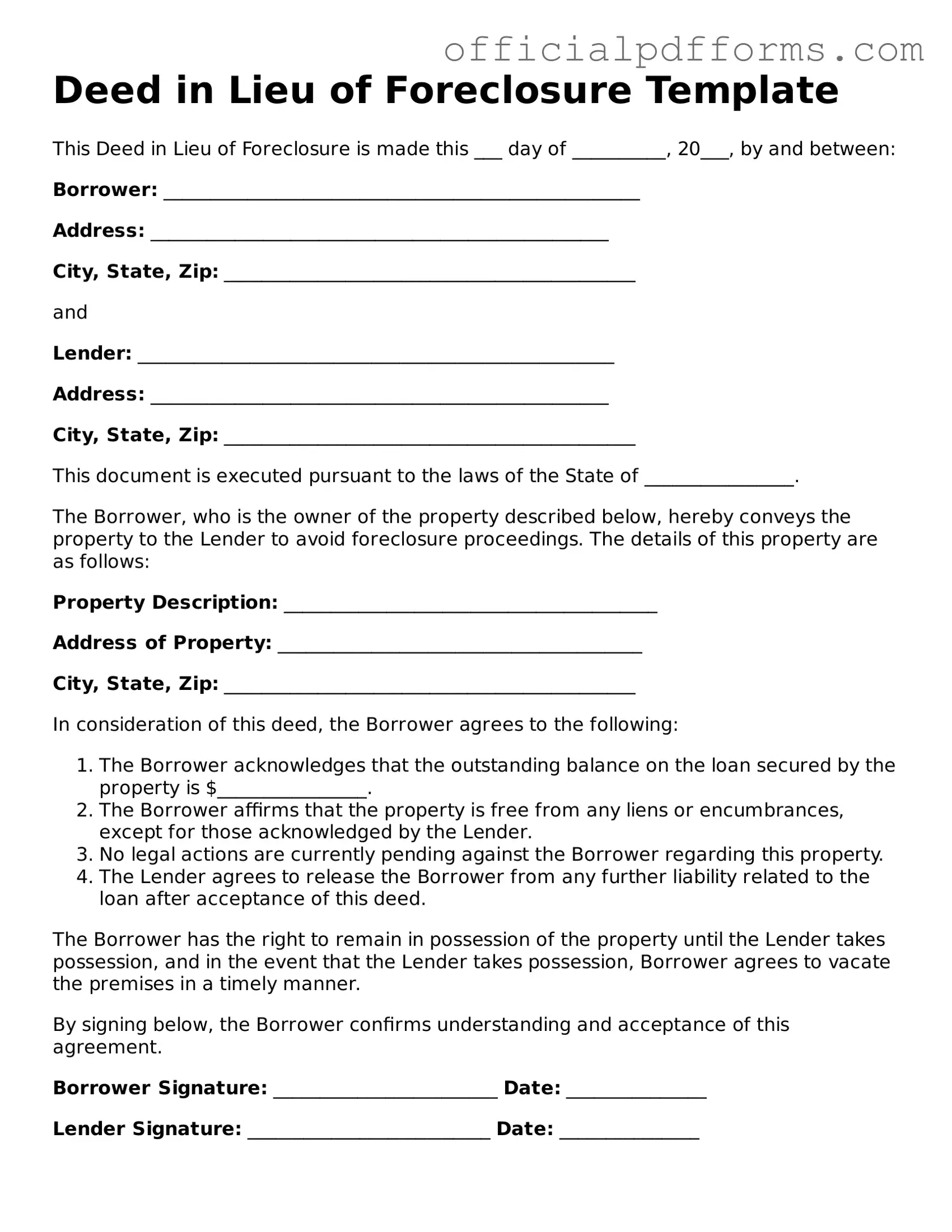Valid Deed in Lieu of Foreclosure Document
A Deed in Lieu of Foreclosure is a legal document that allows a homeowner to voluntarily transfer ownership of their property to the lender to avoid foreclosure. This process can provide a more efficient and less damaging alternative for both parties involved. If you are considering this option, take the first step by filling out the form below.
Access Form Online
